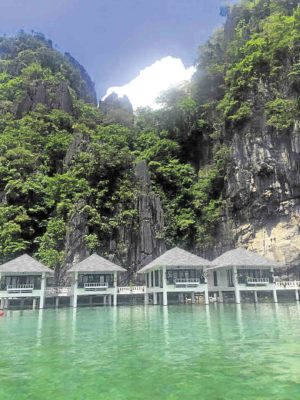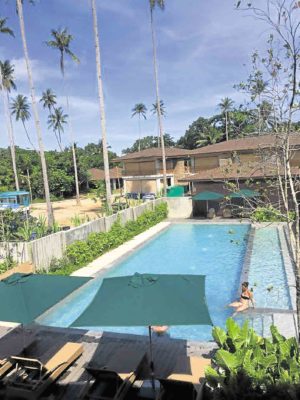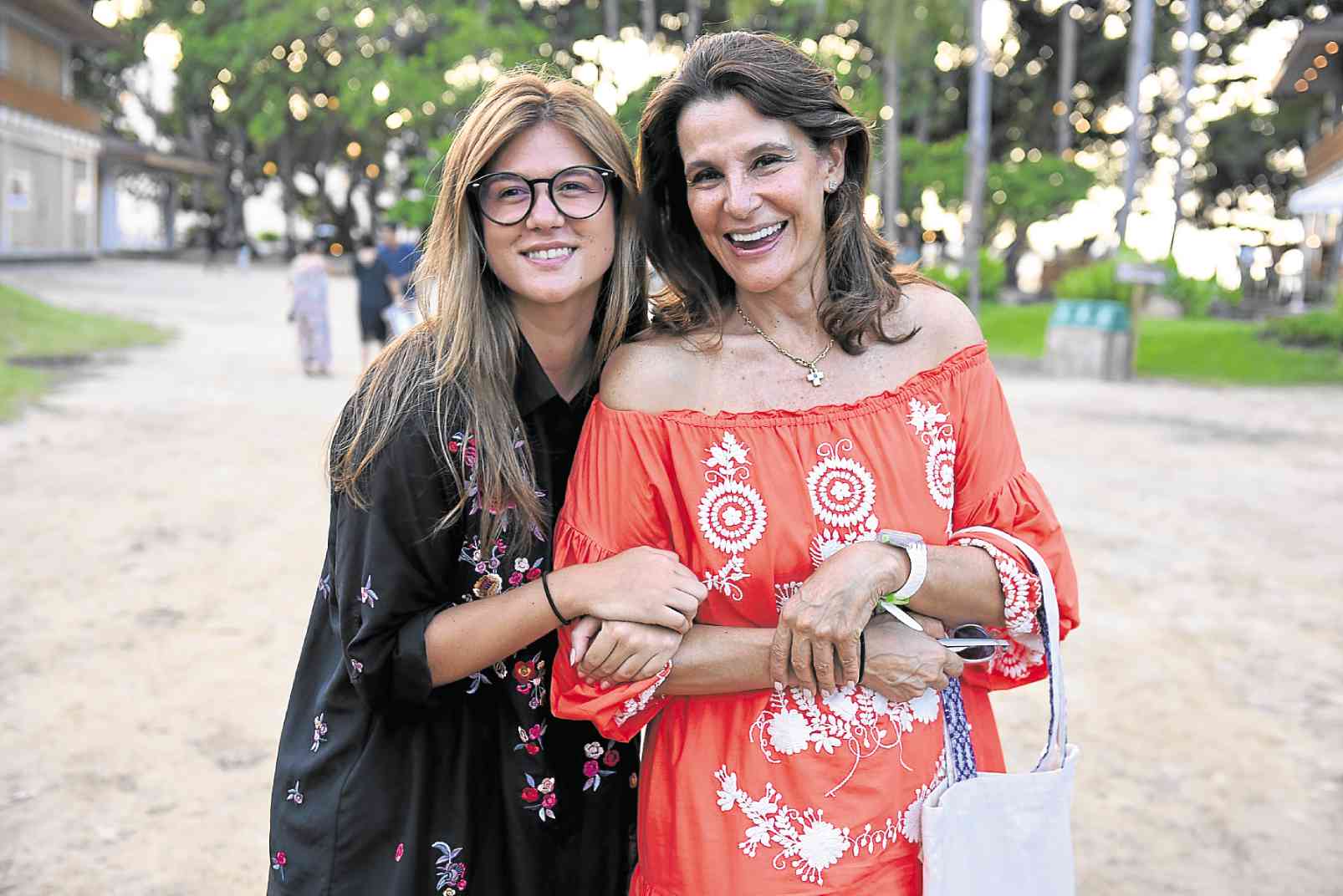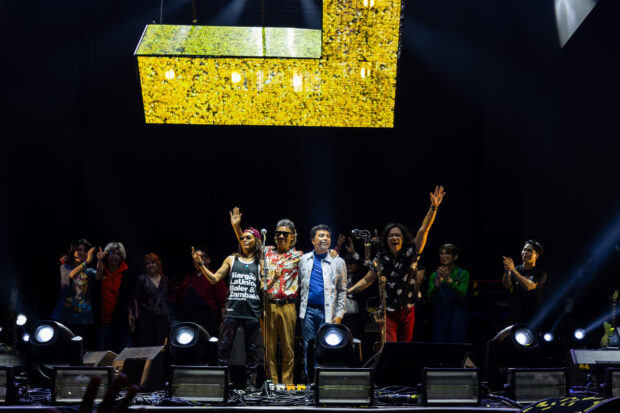
These days, Bea Zobel Jr. wakes up early morning to the chirping of birds and the sight of chickens roaming the garden.
Beyond her backyard is the sea—the clear and infinite horizon. It’s not that visible from her home, but she knows it’s there, way beyond her backyard.
There are no tall buildings to cover her view of the sky, only tall coconut trees that frame her composition of the summer blue sky and the camel-colored sand.
“The land looks like paradise,” she tells us that Thursday afternoon.
It seems like paradise. In truth, it is El Nido, Palawan.
Bea Zobel Jr. (to distinguish her from her mother, the well-loved matriarch of the Zobel clan) and her 26-year-old daughter, Paloma, have moved to El Nido in Palawan, to Lio, the town.
It’s a move that’s not only radical but may also shock some—the scion of the clan that’s behind one of the biggest conglomerates in the Philippines is embracing provincial life, chucking the gloss and glitz of the city.
Ayala Land is developing the Lio Tourism Estate as part of its sustainable tourism project in El Nido that already includes the island resorts of Lagen, Pangulasian, Miniloc, Apulit—no doubt today’s hottest island destinations, and the recipient of the Conde Nast Traveler Reader’s Choice Awards 2016.

The Lio Tourism Estate covers a 325-ha gross land area, only 55 percent of which will be developed, while the remaining 45 percent will remain nature reserve sites and open space.
But even taken in the context of this business venture, still, a Zobel settling down on the islands is an eyebrow-raiser in the chi-chi set.
“Nobody believed my mom could move here,” says Paloma, who’s lived in New York and London herself. “But then this is like our office—this entire community, this beautiful culture.”
In truth, Bea Jr. has always been drawn to provincial life, its culture and the arts in particular. It can be said that she’s helped Bohol become a culture tourism destination, promoting its crafts and heritage sites.
Artist and Movement 8 stalwart Tony Gonzales reminded us how Bea Jr. helped in the roof restoration of Dauis church, for instance.
So settling down in El Nido to develop an artisan village is really in Bea Zobel Jr.’s DNA, so to speak.

Artisan village
“Actually it was Fernando (Zobel, chair of Ayala Land and Bea Jr.’s brother) who asked me two years ago if I wanted to take part in building something different for Ayala… To build an artisan village is his idea,” Bea Jr. says.
Last June 14-16, we flew to El Nido to attend the awarding of the Ayala Merchant Rewards, the 19th year of the prestigious retail awards. The Ayala Malls, headed by Rowena Tomeldan, flew in 120 retail merchants to El Nido for the awarding, from all over the country where its malls are. This was the first time that Ayala Malls brought its merchants out of Metro Manila for the awarding.
It was before the awards night that we got to sit down with Bea Jr. and Paloma to discuss Kalye Artisano, the artisan village in El Nido, the scale and concept of which the Philippines has never seen. There have been artists’ or artisan villages that cropped up now and then in various parts of the country, but their integration with the hospitality/tourism industry has been mostly incidental and quite ad hoc.
Kalye Artisano in the Lio Tourism Estate will be the first of its kind in the country, because of its two distinctive features.
First, it integrates retail space with bed-and-breakfast houses to be built and run by some of the country’s leading artists, architects and designers. Artists (visual and performing arts), craftsmen, initially from Palawan and eventually from different parts of the country, will conduct workshops and other activities in the retail space.
Second, Kalye Artisano is rooted in the sustainable development of tourism, following what the El Nido island resorts have been doing. Plain and simple, there will be no malls or concrete jungle. The structures, as they put it, will not be taller than the coconut tree—for instance, Casa Kalaw, the first hotel to rise in the Lio Tourism Estate, is only two stories high, with 42 rooms.
And there lies the national significance of Kalye Artisano and the rest of Ayala’s El Nido development: It will prove to the rest of the Philippines, indeed, to the world, that sustainable development or tourism is doable in a paradise like Palawan—that we don’t need to turn our natural wealth in the countryside into a concrete high-rise jungle just to draw in tourists and derive commercial profit. That we don’t need to ravage the earth to profit from it.
Indeed—that the Boracay model is not the only way to go.
Shortly after her brother broached the idea of an artisan village, Bea Jr. linked up with her artist friends, of which she really has many. “I wouldn’t have done this if not for Tony Gonzales, the first person I approached,” she tells us. “I asked him—would you ever think of retiring in Palawan? He said, ‘Without a doubt. I’ve always dreamt of doing an artisan village.’”
Farthest tip
Bea Jr. and her friends have been spending the past two years discovering the arts and crafts of Palawan and meeting with the province’s artists.
Gonzales told us a few days ago, when we asked him about this exploration: “We’ve gone to the farthest tip of Palawan, the Muslim area, in Bea’s search for banig work. And you’ll be surprised how many and how organized the Palawan artists are, from the visual arts to the performing arts. I’m very excited about the artisan village— there’s that space, so we tell the artists, this is our opportunity to use it and express ourselves.”
There will be 12 bed-and-breakfast homes to be built and run by leading names in the creative industry, who have personal ties to Bea Jr.
Aside from Bea Jr. and Gonzales, those who have signed up to build their bed-and-breakfasts are design icon Tes Pasola, another Movement 8 veteran known for her paper art; Maricris Brias, another Movement 8 member known for world-class home accessories using Davao crafts; fashion icon Lulu Tan-Gan; architect Conrad Onglao, who designed the interiors of the new Lio Airport Terminal and other prestigious Ayala projects such as the Pangulasian island resort and the Seda hotel chain; Dino and Bambi Mañosa of the foremost architecture firm that built Amanpulo, among others; and Carlos Pertierra. Fashion designer Rajo Laurel and interior designer Anton R. Mendoza have also expressed their intent to build a bed-and-breakfast.
“People from the arts will come with different concepts, so that everybody can have different experiences of Kalye Artisano, at different price points,” Paloma says, stressing how there will be something for every market segment, from the high end to the travelers who just want a zen moment, like the yoga practitioners, for instance.
The retail space at Kalye Artisano will have three different houses or concepts—Rattan, Cogon, Bamboo—not only to showcase the province’s arts and crafts but also to host arts activities, including workshops in weaving, ceramics or painting. Bea Jr. has already tapped the leading Palawan artists’ group, Art on the Move. There will be a salon spa that offers the indigenous Tagbanua medicinal treatments.
“It will be a very immersive Filipino experience—that’s what we want to bring to life in this community,” sums up Paloma, a millennial herself who best echoes what the millennial traveler is after—experience. Indeed, surveys have shown that millennials, especially when they travel, are after an experience, which, of course, they best capture in their selfies. Today’s travelers go beyond the destination’s scenery, into the lifestyle the destination has to offer, be it water sports, memorable food or unique shopping.
“People come to the Philippines and ask, where can I find this or that craft? So we really want a one-stop shop at Kalye Artisano… Come, participate, and live the Filipino life,” says Paloma. “What we’re after is a curated experience, to offer something unique to the traveler. Travelers want to participate and immerse themselves in the environment, not just sit. You want to leave your mark.”
Kalye Artisano will be in a low-impact development that consists of beach promenade, low-rise hotels. Apart from Casa Kalaw, nearing completion are Balai Adlao and Hotel Covo. There are also restaurants, bars and cafés along the promenade.
“We’re here to support Philippine culture and architecture,” says Bea Jr. “We don’t need to look outside. Let’s look at what inspires us in our country.”
“What is Filipino?” asks the daughter. “How can we make all this cohesive? It’s in the details, such as using features of an ancestral home or carvings from Mindanao.”
Feeling like a tourist
The mother-daughter pair spends their days overseeing these projects, particularly Kalye Artisano. “We walk mornings, for an hour,” says Bea Jr. of their Palawan life. El Nido town has a population of 45,000 and a tourist volume of 180,000. Cebu designer Philip Rodriguez, who loves Palawan, told us, “If you go to the poblacion, you’d be the one to feel like a foreigner, because there are more expats or tourists than locals.”
Paloma Urquijo Zobel was schooled abroad—a degree in Business Administration from the Strategic Design and Management Program at Parsons School of Design at The New School in New York City, and further studies at Imperial College London. She worked for Estée Lauder in research, and did marketing for a fashion house.
“I saw myself going to design,” she tells us. She has created the Piopio line of local crafts (such as inabel) made chic, now available at El Nido.
On previous vacations here, she would go with her mother on provincial trips, doing research on interesting crafts and to absorb the local culture. “I’ve been lucky enough to be traveling with my mom, driving from Ilocos to Sagada, weeks of just driving and meeting artists,” she says.
Then she overheard her mother and Gonzales discussing the artisan village, and told her mom that she wanted to come home for good.
It was an exultant surprise for the mother. “I thought she’d want to stay in the US or Europe. Then she said, ‘I’m coming home.’ It was completely her choice,” Bea Jr. recalls.
Her youngest, Monica, is an online editor of a Conde Nast publication—“She’s only 22 and I’m giving her time before she comes home,” says older sister Paloma. Son Jaime has come back to work with Ayala—“and loves this country to bits,” says the mother.
“At first I was scared, I might get bored,” Paloma recalls her early days in Palawan, “but then I’m liking this life a lot. So many things going on, like last week we had a music festival organized by the organizers of Malasimbo.”
The mother agrees, in jest, so you like to think—“It’s so quiet here that we may not like going back to Manila. With Palawan as your backyard, how can you get bored?”
But what is rewarding is the thought that they are giving employment to the population, “that they don’t have to go to Manila to find work,” says Bea Jr. It is gratifying, for instance, that the head chef of Masinloc island resort used to be a carpenter, or that a bartender is now a hotel manager.
There’s also the fulfillment mother and daughter derive from turning craftsmanship into a livelihood, from banig weaving to making cashew delicacies.
“It’s incredible what we’re learning from the people and their ways. Patience is one of them. And that we’re all in this together, from the brownouts and everything,” Bea Jr. explains how she’s gotten used to provincial life.
But the mother in her finds happiness in the knowledge that her foreign-schooled children choose to come home— “What I did was educate them, to try to give them the best education, to expose them to everything,” Bea Jr. says, “But I thought, how sad, they’re never coming home. But no, what they did was absorb everything. In the end, I wanted them to give back to the Philippines.”
Give back—in these trying times, that is the good news we thirst for.














































